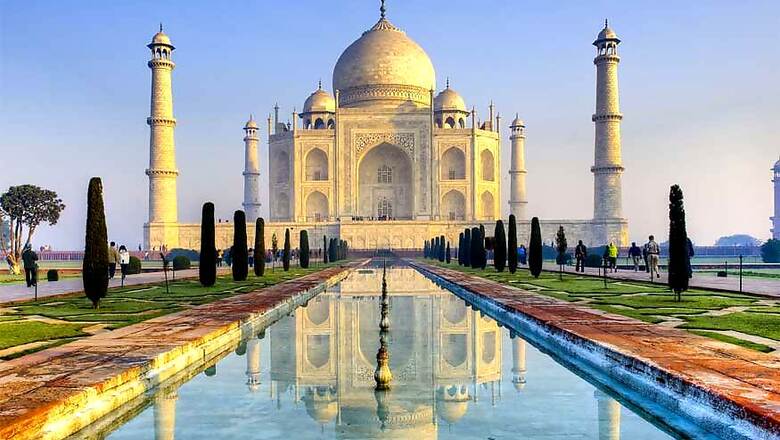
views
April 18 is observed as World Heritage Day every year to celebrate and promote the cultural heritage across the world. If the past intrigues you, India - being a cradle of civilizations - has plenty to offer in the form of numerous historic monuments dotting the country’s landscape. Check out our list of some of the most prominent historical sites and monuments in India and head to the nearest one this World Heritage Day.
AJANTA, ELLORA AND ELEPHANTA CAVES
The Ajanta, Ellora and Elephanta Caves in Maharashtra provide us a glimpse into the ancient civilization of India and were declared UNESCO World Heritage Sites in 1983 and 1987, respectively.
The Ajanta caves were built during the reign of Emperor Ashoka and further additions were made during the fifth and sixth centuries AD of the Gupta period.
The Ellora Caves, spread over two kilometres and dating 600-1000AD, are a motley mix of religious art and monuments of Buddhism, Hinduism and Jainism.
The Elephanta Caves are a network of seven sculpted caves dated between fifth and eight centuries.
AGRA FORT AND THE HILL FORTS OF RAJASTHAN
The Agra Fort could well be termed as a symbol of peak opulence and power of the Mughals. The fortress built in red sandstone along the banks of Yamuna spread over 2.5 kilometres and houses several palaces, towers, and mosques built between the 16th and 18th century during the reign of various Mughal Emperors, starting with Akbar. It made to the UNESCO World Heritage List in 1982.
The Hill Forts of Rajasthan comprising Chittor, Kumbhalgarh, Ranthambore, Gagron, Amer and Jaisalmer Forts are located on the rocky outcrops of the Aravallis mountain range. Representative of the Rajput “military hill architecture style”, these structures were declared a UNESCO World Heritage Site in 2013.
TAJ MAHAL
Arguably the world’s most famous mausoleum, the Taj Mahal in Uttar Pradesh’s Agra is also one of the Seven Wonders of the World. Built by Emperor Shahjahan in the memory of his third— and most beloved—wife Begum Mumtaz Mahal , it was declared a UNESCO World Heritage Site in 1983 and represents the zenith of Mughal architecture. The Taj Mahal was built over a 16-year period between 1631 and 1648 and draws millions of visitors from across the world every year.
KONARK SUN TEMPLE
Odisha’s 13th century Konark Sun Temple, also known as the "Black Pagoda", is one of the most renowned temples in India. UNESCO, which declared it a World Heritage Site in 1984, describes the Konarak Sun Temple as a “monumental representation of the sun god Surya's chariot; its 24 wheels are decorated with symbolic designs and it is led by a team of six horses.”
THE GOLDEN TEMPLE
The Gurdwara Harmandir Sahib, also known as Darbar Sahib or Sri Harmandir Sahib, is the holiest pilgrimage site of Sikhism, usually known across the world as ‘Golden Temple’. Built around a Sarovar that was completed by Guru Ram Das in 1577, the Golden Temple’s foundation was laid by Sufi saint Sai Mian Mir in 1589 at the request of Guru Arjan, the fifth Guru of Sikhism.
CHURCHES AND CONVENTS OF GOA
Built by the Portuguese colonial rulers of Goa between the 16th and 18th centuries, the Churches and Convents of Goa are religious monuments in the Goa Velha or Old Goa. Some of the surviving monuments of the original 60 churches are: the Saint Catherine's Chapel, Church and Convent of Saint Francis of Assisi, Sé Catedral de Santa Catarina, Jesuit Borea Jezuchi Bajilika or Basílica do Bom Jesus, Igreja de São Francisco de Assis, the Theatine Igreja da Divina Providência (São Caetano), Igreja de Nossa Senhora do Rosário and Igreja de Santo Agostinho.




















Comments
0 comment